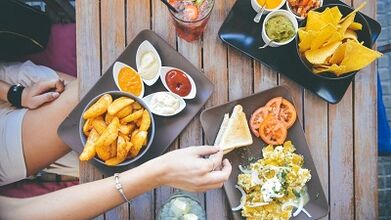
Is water therapy for weight loss right for you?What are the dietary requirements of the Japanese: menus and food choices.What results do you expect?
Water therapy for weight loss originates from Japan and has become very popular throughout the world in recent years.This is called the Japanese diet, although it is less of an eating pattern and more of a hydration pattern.By following it, you can get good body hydration and lose excess weight.
Principles of the Japanese Diet
The advantage of the nutritional system is that there is no need to adjust your diet or give up your favorite foods.
However, several conditions must be met:
Start your day with water.Drink four to five glasses of water at room temperature every morning on an empty stomach.Too many?This is true.But this is the essence of water therapy.The body should receive as much water as possible.If it is difficult to start with such a “dose”, take a gradual approach.Let there be one or two glasses at first.Over several weeks, increase your fluid intake in the morning to the recommended amount.
Drink when you are thirsty throughout the day.The amount of fluid you drink throughout the day is not regulated.You can drink as much as you want.Listen to your feelings.Often the body disguises the need for water as hunger.
Reduce your meal time to 15 minutes.The time interval during which you can eat is 15 minutes.However, the Japanese diet does not dictate what exactly you should eat.In theory, you can eat anything.A 15-minute “window” will prevent you from overeating or overeating.
Eat no more frequently than every two hours.The number of meals per day is also limited.However, the next appointment must be made no later than two hours after the previous appointment.

Drinking enough water cleanses the digestive system, improves intestinal health, and prevents constipation.This fluid causes a feeling of fullness in the stomach and reduces appetite.
There is research data showing that overweight people who drink 500 ml of water 30 minutes before eating eat 13% less.And this in the long run helps them lose weight.
Scientific evidence shows that drinking water increases the body's resting energy expenditure.This means that even when doing daily activities, you will burn more calories than before.Increasing energy expenditure while reducing food consumption will certainly lead to weight loss.
Japanese diet: menu, effectiveness
Despite the fact that the diet does not imply restrictions in the choice of products, this issue needs to be approached carefully.After all, excess calorie content in food is often the cause of weight gain.
Avoid sources of “empty calories”: sugar, desserts, baked goods, plain pasta, polished rice.Replace with long-term carbohydrate sources: whole grains, whole wheat bread.Include more protein foods in your diet: meat, fish, dairy products, nuts.Don't forget about vegetables and fruit: they should be included in every meal.Replace dessert with fruit.
Switching to a new diet will allow you to safely lose weight (within four kilograms per month).This slow weight loss does not cause stress on the body.And it helps to maintain the achieved results and continue to reduce weight to normal.
Sufficient physical activity helps to improve and accelerate results: jogging, brisk walking, swimming, fitness.Any type of physical activity that you enjoy will help you lose weight.
Advantages and contraindications of the Japanese diet
Proponents of the diet claim that this eating pattern doesn't just help you lose weight.But also:
- improve brain function;
- gives energy and strength;
- helps control blood pressure;
- prevent headaches.
This effect is a logical consequence of normal body hydration.And if you didn't drink enough water throughout the day beforehand, you'll actually feel better.
However, keep in mind that each person's fluid needs are different.It depends on body weight and physical activity.Excess water is no less dangerous than lack of water.This can cause a critical decrease in sodium levels in the blood.And causes hyponatremia - a condition in which typical symptoms of poisoning occur: vomiting, nausea, loss of consciousness.
Although drinking four to five glasses of water at once is unlikely to cause hyponatremia, you should still be careful about your body.And don't force liquids into yourself.
People with kidney problems should not take risks and start water therapy without consulting a doctor.And if you feel uncomfortable while following the Japanese diet, you need to reduce your water intake.













































